Sara Schapiro on Education Research and Development
Key Points
-
The Alliance for Learning Innovation is advocating for stronger R&D infrastructure in education to align with sectors like healthcare.
-
Both federal and state support are crucial for developing interoperable data systems and advancing education R&D.
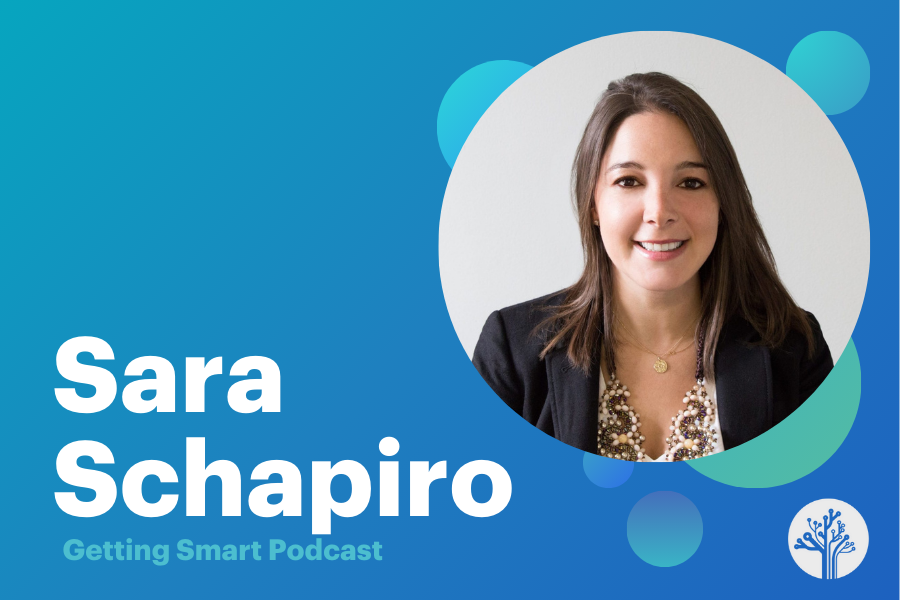
In this episode of the Getting Smart Podcast, Tom Vander Ark engages in a thought-provoking conversation with Sara Schapiro, the director of the Alliance for Learning Innovation. Together, they explore the critical need for enhanced research and development (R&D) within the education sector—an area historically underfunded compared to other industries like healthcare. The discussion delves into the unique challenges and opportunities of education R&D, highlighting the importance of both federal and state-level support in developing interoperable data systems that drive innovation. Sara emphasizes the essential role of venture capital and design research in shaping the future of EdTech, while also stressing the importance of evidence-based practices in schools. This episode serves as a call to action for educators, policymakers, and parents to collaboratively advocate for stronger R&D infrastructure, ensuring that every student benefits from cutting-edge educational strategies. Don’t miss this deep dive into the future of education innovation and the pathways to achieving it.
Outline
- (00:00) Introduction: The Need for More R&D in Education
- (01:21) Introducing Sarah Schapiro and the Alliance for Learning Innovation
- (02:56) Challenges in Education R&D Funding
- (08:10) State-Level Data Systems and Federal Support
- (10:23) Higher Education and Research Incentives
- (13:12) Venture Capital in EdTech
- (16:30) The Role of Federal Government in Education R&D
- (22:50) Conclusion: Collaboration and Next Steps
Introduction: The Need for More R&D in Education
Tom Vander Ark: We need more education R&D. We need more public R&D. We need more private R&D. We need more basic research on how people learn and develop. We need more practice-related R&D. You’re listening to the Getting Smart podcast. I’m Tom Vander Ark, and I stepped into school leadership more than 30 years ago with that proposition.
Thirty years ago, we were just stepping into the information age. We had just gained access to the worldwide web, and it felt like there was a new world of possibility. But there was very little research and development going on. I stepped into philanthropy about 25 years ago with that proposition that we needed to sponsor more.
About 15 or 16 years ago, I helped launch the first EdTech Venture Fund because there was almost no private R&D in education compared to every other sector. So this proposition that we need more and better R&D has really been an animating force in my career.
Introducing Sara Schapiro and the Alliance for Learning Innovation
Tom Vander Ark: And I’m happy to say that today I have my good friend Sara Schapiro here to talk about why we need more and better R&D.
Hi, Sara.
Sara Schapiro: Hi Tom. It’s so good to be here.
Tom Vander Ark: It’s great to see you, and I think this is the first time we’ve chatted in your role heading the Alliance for Learning Innovation.
Sara Schapiro: We met a long time ago when Digital Promise was getting off the ground. Speaking of R&D, there is a lot of impetus behind R&D and the need for more of it when we were creating Digital Promise. So it’s a conversation that, as you said, has been going on for a really long time.
Tom Vander Ark: Part of my proposition, Sara, is that education is a peculiar sector of the economy. It has surprisingly little R&D, both public and private, particularly when you compare it to health and healthcare, which is a little bit larger, but they’re both two of the biggest segments of the U.S. economy, and healthcare just has dramatically more basic research and a direct pipeline from basic research into pharmaceutical development, drug delivery, and healthcare. And we don’t have anything like that in education. So, do you buy that notion that we’re peculiarly underfunded in terms of R&D?
Challenges in Education R&D Funding
Sara Schapiro: We are. The Alliance for Learning Innovation did a funding analysis of the federal R&D spend in education. It’s really low. I think it’s 0.4% of the Department of Education’s entire budget. It’s extremely low. R&D is the backbone of progress in any field. How do you move the field forward? How do you discover the next frontiers of what’s possible? How do you develop evidence-based strategies that actually work with students? We argue it has to be R&D, and it has to prioritize spending an appropriate amount in education to push us forward as a field. We’re pretty much the last field that doesn’t have the kind of investment in R&D that we need to. Agriculture, health, transportation, infrastructure—they all spend more on R&D than we do.
Tom Vander Ark: Just when it felt like we were making both public and private progress, the last few months have happened. We’re speaking at a strange and maybe opportune time to gather support to build back more and better education R&D. What are those terms? How do you at the Alliance think about what is education R&D and what is education R&D infrastructure?
Sara Schapiro: We think about R&D as the infrastructure for creating, studying, implementing, and getting into the hands of practitioners what works in education—what works for whom and under which conditions. We want to ensure that teachers have the best tools and methods to teach. We want to make learning more engaging and effective. It is about making decisions in education on a foundation of data, evidence, and research, and ensuring that data, evidence, and research are pushing us to innovate not just in technology, which is important, but in how we do school. It could be busing, it could be almost anything in education, but we need to base decisions on data, evidence, and research. We need to make sure that research and innovation efforts are aligned with the pressing challenges in education. We want to get evidence-based solutions into the hands of practitioners. Knowledge mobilization—how do you get stuff into people’s hands so they use it, and how do we get the field away from things that don’t work? That’s how we think about R&D and its infrastructure. In a better-functioning system, everything would be aligned towards the goals and outcomes we want to see for our kids.
Tom Vander Ark: I want to make two comments about infrastructure. We’ve inherited a particularly bad infrastructure in two respects. One, the strange anachronistic American governance system where we have a locally controlled education system. It’s rolled up to the states. A few states have a longitudinal data system, but this is basically a local affair of about 20,000 local education authorities—it’s a strange, decentralized system by and large. On the data side, we have a history of private ownership of data models, so EdTech vendors own the data, not the learners or the schools. This weird combination of governance and the data model seems to be weak components of R&D infrastructure. Is that a fair way to think about the givens that we’ve inherited?
Sara Schapiro: Yeah, I think it’s an interesting point in the mix of where data is held publicly, where data is held privately, and how hard it is to mesh those data sources. I’d add another complexity: there’s a lot of data held by the federal government, and a lot of that infrastructure at the federal government, some of which, in the last few weeks, is being dismantled. But a lot of that infrastructure and those data sets enable states and districts to make decisions, choose evidence-based curriculum, and run their statewide longitudinal data systems. There’s a lot of interplay with the federal government, which is complicated.
State-Level Data Systems and Federal Support
Tom Vander Ark: It’s interesting and somewhat ironic that people think of Florida as a conservative state, but Florida probably has the best longitudinal data system. I credit Jeb Bush’s early leadership for ensuring that there is a school-to-career pipeline that you can track much more easily in Florida than anywhere else. Is that true, and is that an example of what we need more of?
Sara Schapiro: Yeah, Florida is a great example of that. I sit on the Board of Data Quality Campaign, and I know a lot of the work they do in Florida. California has some good data systems. I would say too, to go back to the federal government, when the Ally Coalition pushed for legislation to be introduced in the Senate and the House called the NEED Act, it created something called the National Center for the Advanced Development in Education. This new concept of the DARPA for Education included more funding at the federal level to enable states to create comprehensive statewide longitudinal data systems like Florida’s. It’s both something states need to own and prioritize, and to some extent, they need a little federal support so that at a national level, we can see across data systems and see comparisons, ensuring that the data systems speak to each other. There’s a problem with these data systems in that Colorado’s looks different than Florida’s, which looks different than Kentucky’s. We need a better way of having those data systems speak to each other so we can see trends from pre-K through workforce and beyond.
Tom Vander Ark: We still have the public versus private data where a lot of education data in America is owned by vendors, and it’s not interoperable. I want to give a shout-out to our friend Erin Mote, who’s been a decade-long leader on the subject of interoperability. Interoperability is part of the infrastructure needed to do good R&D.
Let’s talk about higher education.
Higher Education and Research Incentives
Tom Vander Ark: I have the impression that schools of education, for a lot of reasons, are not necessarily encouraging scholars working on advanced degrees to work on high-priority problems of practice. I get the impression that we have incentives that encourage the best and brightest education scholars into dark, obscure corners instead of working collaboratively, maybe in an interdisciplinary way, on the problems of practice. Do you think that’s true? Is it unusual to education, or is that a higher ed challenge of how we’ve structured incentives for PhDs?
Sara Schapiro: It’s a good question. I don’t know if it’s an education problem exactly, or a higher ed problem. I think higher ed and the research done at the higher ed level and by PhD students and amazing professors who you and I know are doing incredible education research, there should be work in the field to organize us around a set of challenges and outcomes we need to see for kids. For them to be successful, they need to be able to read, they need to be able to do math. The most recent NAEP results show that one-third of eighth graders can’t pick out a main idea of a text. They’re performing below basic in literacy. One-quarter of fourth graders scored below basic in math. We have a real problem, and that was a huge red flag, a huge wake-up call to the field, to the country, that our students are not doing right by our students, both in terms of instruction and school environments. All kinds of things are not going the way that we need them to. My push to the education field and the education research field is that we all need to focus on these core challenges that students face. The science of reading is a big push in that direction. We need that same movement in math, and the education research field needs to organize around where we’re seeing the greatest challenges for kids.
Tom Vander Ark: I’ll add a shout-out for the Science of Learning and Development Alliance. The SoLD Alliance is another great example of a set of impact organizations encouraging more basic research into the core questions of learning and development. We’re seeing some progress there, some inside universities, some in impact organizations.
Venture Capital in EdTech
Tom Vander Ark: Let’s talk about venture capital. As I said at the outset, in 2008, I was frustrated by almost zero venture capital in EdTech. There were no dedicated EdTech funds then, compared to the exploding tech sector and a healthy health and biomedical sector. Today, we have a couple billion dollars of venture capital flowing worldwide. So we’ve definitely opened the tap. I’m happy to report that most national education foundations are contributing to investing in venture funds, recognizing that it’s an important sector. We’re seeing more money, but I’m not sure that venture capital is contributing as productively to education R&D. How do you feel about the productivity of education venture capital today?
Sara Schapiro: I guess when I think back to the early days of Digital Promise and when we were working with cutting-edge EdTech entrepreneurs to partner them with districts and create research-practice partnerships at a local level with EdTech entrepreneurs, researchers, and districts, I think about the progress we saw with those kinds of initiatives. We’ve seen a lot of money being poured into EdTech and innovative learning solutions, but I don’t think we’ve seen corresponding investment in the research base and the evidence base that powers the kinds of things that EdTech, the venture capital, is investing in. That’s not the case for everyone, and I don’t want to paint everybody with the same brush. But the evidence-based tools and strategies piece, the evidence-based being the key driver here, a lot of them are lacking evidence. I don’t necessarily fault the venture capital groups. I don’t fault the EdTech entrepreneurs. We have not invested in the evidence to tell us at a very basic level, in many cases, what works for whom and under which conditions. It’s really hard to have hugely successful EdTech products that aren’t based on evidence.
Tom Vander Ark: Ten years ago, the evidence was a coder who would say, “My sister complained about this in her classroom over Thanksgiving, so I coded an app for it over the weekend.” That was the evidence grounding, with no link to basic research. I will give a shout-out to a set of venture funds now that are impact-focused and have a commitment to due diligence around basic research. I think OWL and Reach Capital and Rethink are particularly good. There’s a group of foundations stepping into the impact investing space, like our friends at AASA, Lumina, ECMC. They’re all doing some impact investing in the venture space with a real focus on evidence. So it feels like this is improving, not just in size, but in the link to basic research.
Sara Schapiro: I would agree with that.
The Role of Federal Government in Education R&D
Sara Schapiro: And again, I think this is where the federal government really needs to be a player at the table and where the investment needs to be. I know it seems like a weird thing to say in the aftermath of a lot of cuts to basic research at the Institute of Education Sciences and the Department of Education and potentially other agencies related to R&D. But this is where the federal government can help. This is the sort of large-scale research investments that only the federal government can do, can power up a suite of tools, strategies, and investments that then the private sector. To your earlier question about public sector, private sector, this is where we can support the private sector to innovate, is if the federal government is investing in the evidence base to tell us what works.
Tom Vander Ark: I want to note that another form of research we don’t do enough of in education is design research. This is in addition to what works, looking historically. We’ve just in the last few months stepped into this new age of AI where every connected human now has access to expertise, and it’s a brand new opportunity platform that’s, I think, calling us to really reimagine what learning could be, what school could be. It feels like it’s a time when we need more research, but from a design perspective, about how looking forward we could use these tools to promote skill-building, not just technical skills, but durable skills. How we could reimagine learning environments and learning progressions. It feels like right now when we should be doubling down on research, and I mean practice research, but design research, we’re seeing cutbacks happen.
Sara Schapiro: We actually ground it. Each year, the Alliance for Learning Innovation, I should say, what we are, we are a coalition of 90 plus organizations, philanthropy, nonprofit research organizations that have come together to push for a stronger and more modern education, research and development infrastructure. Each year, we put up policy recommendations, and I’ll say this year our policy recommendations were strangely timed because we wrote them in November and December thinking that we were anticipating everything that was going to happen with this incoming administration, and then released them as major cuts were happening across the Department of Education. I will say the timing of it was a bit odd, but one of the major thrusts of the policy recommendations was around investing in R&D specific to AI and specific to how are we helping teachers and students use these tools? How do we design tools to your point that help us reimagine what education can and could look like? And how do we do it safely and effectively? I will say this administration did release an AI request for information such that their AI strategy would be informed by the field’s recommendations. The Alliance for Learning Innovation submitted comments around this. We think this is a huge opportunity and a major place to your point where research and development has to be at the center of that, at the foundation of it, because we can’t design tools in education without good R&D, and especially as we think about artificial intelligence.
Tom Vander Ark: There’s some calling now for returning education, quote unquote, returning education to the states. Does the alliance believe this has to be a federal issue or at least an and both issue, that it has to be a state and federal issue in terms of dedicated continuous funding streams for R&D, right?
Sara Schapiro: We do. We think it is absolutely critical that there are education R&D functions at the federal government. We do not believe that it is smart, effective, or efficient to replicate the work that the federal government does in research and development at each state. There are many things that we could do to equip state leaders, state departments of education, districts, for that matter, to do more R&D, and the alliance is working with state leaders on a lot of this. But the truth is most states don’t have the capacity at the State Department level to understand what works for whom, to run large-scale longitudinal research studies, to house big warehouses of data, to maintain things like the Common Core of Data or IEDs, which is post-secondary education data. There’s just so much that the federal government does. I will say the Alliance for Learning Innovation was the genesis of it was that we thought that the infrastructure needed to change and needed to be more effective and could be more effective and could serve states better. So we are very much in the and both category to your question. But it doesn’t mean that we advocate for nothing at the federal government level. In terms of the capacity, the infrastructure for R&D, we absolutely believe that this is a critical function of government. It dates back to the beginning of the census data. There’s a real core role for the federal government to play. We think states can do more, and we can give states more funding and support states in their efforts to do more R&D locally.
Tom Vander Ark: There are so many directions we could go with this. It’s been exciting to see the alliance come together quickly. It’s great that there are 90 impact organizations that are part of this charge. I would say getting smart is a late addition to the parade.
Sara Schapiro: We are excited to have you.
Tom Vander Ark: To be part of this group.
Conclusion: Collaboration and Next Steps
Tom Vander Ark: Let’s, as we bring this to a close, think about some next steps. What would you recommend that people do next who are concerned about some of the things that we’ve talked about today and the need for more and better R&D?
Sara Schapiro: As I think about parents, I’m the parent of two young kids myself, which, as you think about education policies, knowing too much is not always good when you’re thinking about your own kids’ education. But I do actually think parents can play a really important role in this if they are demanding from their schools that the education that their kids are receiving is evidence-based, that the curriculum that their district is choosing, that their state is choosing, is research-backed. I think parents have a big role to play in that, and I do think we can be at the federal government level, at the state government level, state Department of Ed level. We can be doing more to help parents be research literate, more resources for parents about research, making research more kind of family-friendly. When parents understand evidence-based practices and best practices, like how my kids should learn, again, the science of reading is such a good example of it. As the movement took off and parents understood, “Oh, this is what literacy instruction could and should look like, this is what I want for my kids,” they made school choices. They pushed their school boards of education to adopt the science of reading in their schools. I think that’s a really good example of a groundswell from parents and families that made big waves in education.
Tom Vander Ark: Sarah, I guess I’m struck by the need for collaboration right now. We’re at this really interesting point in education where we just know a lot more with all the powerful research that’s been done on learning and development and the science of reading. We have better tools, but they’re still kind of klugy. We know more, and we have more, but it’s still pretty complicated to build a sophisticated, modern research-backed learning model and then support it with a tech stack, an integrated interoperable tech stack. There just aren’t that many leadership teams in school systems that have the capacity to do both of those things. I think one of my takeaways today is that education leaders need to work together cooperatively to support the development of research-backed learning models and tools. What kind of collaborations can learning leaders step into? Is the alliance one of those? Is Digital Promise an example of a League of Innovative Schools? How can we do more collaborative research-backed work together?
Sara Schapiro: Yeah, it’s a great question. I think the alliance has been operating at a national policy level, but we have been bringing members into the coalition who are specifically focused on district-level decisions, and we’ve brought folks in who are principals, who are superintendents. I think the more that local education leaders are a part of these research conversations, the better. The ally put out and worked on a task force around inclusive innovation. We can’t get there until we are creating research projects, designing research at the beginning in partnership with students, parents, educators, district leaders. The research needs to start with the end users and the people who are the beneficiaries of said research so that the research structure represents what’s actually happening on the ground level and, to the earlier points, is tracking towards things that actually matter to schools, to students, to teachers, and to parents.
Tom Vander Ark: We’ve been talking to Sara Schapiro, the director of the Alliance for Learning Innovation. The alliance just put out a really great set of policy recommendations for 2025. Sara, those are for you. Do you have federal policy recommendations for state and local leaders?
Sara Schapiro: Yeah, so we have three core audiences. We have one for Congress, one for state and local leaders, and one for the administration. The recommendations are targeted at those audiences, but together, they ladder up to what it takes to get us to a stronger, more modern, and, to your point, an education R&D infrastructure that actually brings the public and private sectors together, brings together district, state, and federal leaders. It is about collaboration.
Tom Vander Ark: Where can people find those recommendations?
Sara Schapiro: It’s at alicoalition.org.
Tom Vander Ark: alicoalition.org will be included in the show notes. People should read that. We have a lot of learning leaders that listen to this. They should read it. Would it be helpful if they sent a note to their member of Congress in support of those recommendations?
Sara Schapiro: We would love that. That would be amazing. Because I think what we’re trying to say is the previous. Nobody would have argued that the federal infrastructure for education, research, and development was perfect. But we would argue that it absolutely is essential to our education system to have it. So, the more voices that are talking to their members of Congress about the need for data, evidence, and research in education, the better.
Tom Vander Ark: Did you have any sense when you stepped into the leadership role at the Alliance that you were going to be stepping into such a dogfight?
Sara Schapiro: I didn’t. When we were getting the ALI Coalition started, it was a much calmer time, and we were talking about more investment and just what was possible versus a world of potentially no investment in R&D. It’s really different.
Tom Vander Ark: Your job is even more important, much bigger, much harder than you probably imagined. But we all super appreciate your leadership. Sara, you know you’re taking on a really important issue. We have such a great opportunity right now, right in front of us, to make education better for every kid in the country, for every young person on the planet, but it’s going to come down to better R&D. The long-term prospects for our kids really depend on high-quality research and development. So we appreciate your leadership in its tough and important time.
Sara Schapiro: Thanks so much, Tom. Thanks for having me.
Tom Vander Ark: Thanks to everybody for joining us. Thanks to our producer, Mason Pashia, and until next time, keep learning, keep leading, and keep innovating based on research and development. See you next week.
Guest Bio
Sara Schapiro
Sara Schapiro is a former Senior Fellow and Director of Social Innovation for the Federation of American Scientists.
Sara has emerged as a prominent voice in the transformation of American education through innovation and technology. Most recently, Sara served as the Vice President of Education at PBS where she led their efforts to deepen partnerships across the education sector and launched new initiatives that empower and support educators, students, parents and member stations. She expanded PBS’s educational impact through tools like PBS LearningMedia, a digital platform of free, classroom-ready resources from PBS stations and partners, and initiatives such as PBS’s at-home learning offering, which included free broadcast TV programs that support at-home learning for prekindergarten through 12th grade and digital resources that provided educators and families with learning options for new school routines during the COVID-19 pandemic.
Before PBS, Sara helped found Digital Promise, an independent, bipartisan nonprofit whose mission is to spur innovation and improve all Americans’ opportunity to learn. She launched and led Digital Promise’s flagship initiative, the League of Innovative Schools, a national coalition of public school districts that fosters collaboration among educators, entrepreneurs, researchers and thought partners.
Before Digital Promise, Sara worked for the New York City Department of Education, Chicago Public Schools, the New Jersey Department of Education and Pearson on pioneering teaching and learning projects, educational technology initiatives, and teacher and student engagement efforts. She holds a B.A. from Duke University and a Master’s of Public Policy from the University of Chicago Harris School of Public Policy Studies.
Links



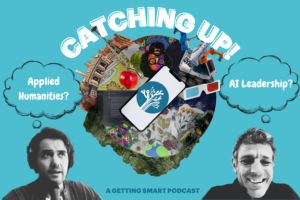
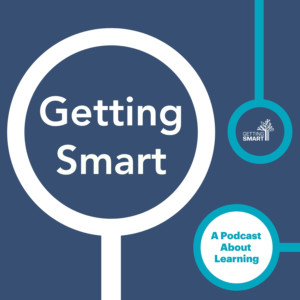


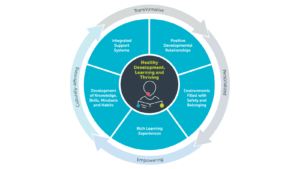
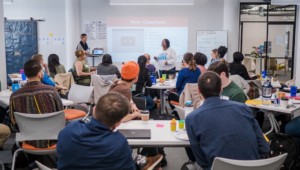

0 Comments
Leave a Comment
Your email address will not be published. All fields are required.